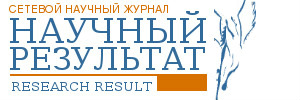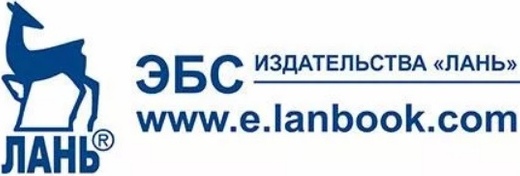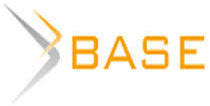Introduction. The abbreviation STEM appeared relatively recently. STEM education (Science, Technology, Engineering and Math) is a process that integrates the study of natural sciences, engineering, technology and mathematics, and corresponds to the term “natural and technical education” established in the Russian lexicon (Godunova & Ramazanov, 2021). STEM education is a modern learning system that, unlike traditional learning, is a mixed/integrative environment that allows you to demonstrate in practice the application of scientific methods in everyday life. As part of STEM education, students can study robotics, programming and other disciplines simultaneously with mathematics and physics (Morozova & Duxanina, 2019). In the USA and Canada, the STEM approach is characterized as combining methods, knowledge and tools of various disciplines into one block when solving practical and project tasks. For educational systems, the STEM approach is seen as a request of the state and high-tech corporations to strengthen natural science, mathematics, engineering and technology education, attract talented young people to priority sectors of the economy, as well as to increase scientific and technological literacy of the population as a whole. STEM education is especially relevant in those countries where high technologies are developing (Obukhov & Lovyagin, 2020).
The first studies of the introduction of STEM education confirm its advantages, for example, the development of students’ interest in technical disciplines in organizations of preschool, secondary general, secondary professional, higher and additional education; improvement of critical thinking skills: students learn to solve non-standard tasks by testing and conducting experiments, which allows them to prepare for adulthood, to solve non-standard tasks; development of communication skills: children spend most of their time together modeling, designing, learning to discuss[1],[2].
The problem of STEM education is currently being actualized due to the loss of students' interest in mathematical, engineering and natural science disciplines. This can be explained by the objective difficulty of mastering the necessary competencies and the insufficient number of hours in the curriculum for their study. In most general education organizations, especially in rural schools, there is no necessary modern equipment, which makes it difficult to solve practical problems, apply theoretical knowledge in practice[3]. In general education organizations, much attention is paid to teaching schoolchildren project activities, the implementation of research projects. However, in a number of schools, this activity has not yet received sufficient development. As a result, students lack the skills to creatively apply the studied theoretical material. In some schools, interdisciplinary connections are not used enough in the implementation of research projects. All this confirms the relevance and necessity of introducing STEM education. The identified problems are of an interstate nature, which is confirmed by international studies (PISA, TIMSS, etc.), which revealed problems of mathematical, engineering, and natural science literacy of schoolchildren from different countries, lack of skills to apply their knowledge in various life situations (Kormakova et al, 2021b).
State documents fix the requirements for the training of highly qualified, competent specialists for the digital economy of Russia, in various areas of education, primarily in the field of natural sciences and in the field of high technologies[4]. The state standards of Russian education inevitably require the introduction of modern technologies in the educational process. Solving the problem of shortage of engineering personnel (IT specialists, engineers, programmers, etc.) increases the relevance of the introduction of STEM in Russian education (Kormakova et al, 2021a). One of the main advantages of STEM education is the integrative nature of the educational process, a practice-oriented approach to learning and a strong professional orientation of schoolchildren (Vezirov et al, 2020). In this regard, the introduction of the STEM approach in the process of teaching students is becoming a priority direction of the state educational policy. The introduction of this approach into the education system contributes to meeting the needs of society for scientific and engineering personnel, the development of technological processes, the modernization of bio- and nanotechnology (Pankratova et al, 2020). The formation of students’ interest in STEM disciplines will allow students to develop critical thinking and communication skills.
Based on the above, the problem of developing STEM teacher training programs is actualized. For example, Belgorod State National Research University (Russia, NRU “BelSU”) has developed a STEM teacher training program. This was made possible thanks to the participation of the National Research University “BelSU” in the implementation of the project “Integrated approach to the training of STEM teachers” of the European Union program “Erasmus+”. The project was being implemented (15.01.2019 - 14.09.2022) in a consortium of 10 partner universities: Linkoping University (Sweden) as coordinator; Limerick University (Ireland); Hasettepe University (Turkey); Helsinki University (Finland); Southern Federal University as co-coordinator; Belgorod State National Research University; I. Kant Baltic Federal University; L.N. Gumilyov (Kazakhstan); M. Auezov South Kazakhstan State University (Kazakhstan); S.S. East Kazakhstan State University. Amanzholova (Kazakhstan) (Trikula et al, 2020).
Recognizing the theoretical and scientific-practical significance of the conducted research, we note that at present the problems of STEM education have not been sufficiently studied. Digitalization of STEM education and the search for ways to intensify it based on empirical research requires further consideration and study.
The purpose of the study: to identify the interest of schoolchildren in STEM disciplines, to study the factors and features of their teaching in general education organizations in Russia and the Republic of Kazakhstan, to identify ways to solve the problem of digitalization of STEM education for further development of motivation of senior schoolchildren to professional self-determination and education in the scientific and technical field of activity.
Research Results and Discussion. As a result of a study conducted to identify the interest of schoolchildren (Russia, Kazakhstan) in STEM disciplines, it was found that the majority of respondents (72%) are satisfied with the teaching of STEM subjects, and 62% consider STEM subjects interesting (43% of them find them somewhat interesting and only 19% very interesting). A survey of respondents on satisfaction with the use of ICT, software and Internet resources when mastering STEM subjects showed that 66% of respondents are satisfied with their use (the level of use is called sufficient), but only 35% noted that equipment and software are used regularly. 28% of respondents stated that teachers rarely or never use ICT and special software in the classroom. 26% of respondents admitted that their school lacks modern equipment, ICT, laboratories, as well as equipment for studying STEM disciplines. The majority of schoolchildren (73%) noted that classes in their school in STEM disciplines are conducted exclusively in a theoretical form using textbooks, and only 38% of respondents perform laboratory work using the necessary equipment for this. Less than 20% of these students develop individual or group projects; only 10% of respondents stated that they study real cases and take part in interdisciplinary projects. An analysis of the responses of students of Russian and Kazakh schools showed that they mostly choose traditional, rather than the latest STEM disciplines, since an interdisciplinary approach to teaching STEM disciplines has not yet been introduced in schools, which actualizes the need for teacher training in this area.
Analysis of extracurricular STEM activities of Russian schoolchildren showed that 450 respondents are interested in mathematics, 175 – in biology, 172 – in chemistry, 171 – in physics, 143 – in computer science. At the same time, 286 respondents out of their total number are interested in extracurricular activities in geography, ecology, 3D modeling, robotics and engineering. The analysis of the results confirmed the need to promote extracurricular educational programs within STEM disciplines (Table 1).

The study of the attitude of schoolchildren to STEM education in the Republic of Kazakhstan also showed that the greatest interest of respondents in additional professions and leisure centers is manifested mainly in the following disciplines: mathematics - 54 people. out of the total number of subjects, physics – 46, technology – 44, computer science – 44, biology and robotics – 38, chemistry – 37, design and 3D modeling – 36 respondents.
According to the results of a survey of Russian teachers of STEM disciplines, the main factors negatively affecting the educational motivation of schoolchildren and the quality of teaching the above-mentioned disciplines are the following: insufficient use of ICT (74 people out of 166 respondents), lack of laboratory equipment (55 people), modern scientific and methodological support (64 people), as well as difficulties in mastering professions related to the study of STEM disciplines (44 people). Teachers also noted the insufficient level of social partnership: the lack of effective networking and cooperation of educational organizations, business and industrial enterprises in the implementation of STEM disciplines, as well as insufficient professional motivation of teachers (28 respondents) (Table 2).

Respondents from the Republic of Kazakhstan noted that the main factors negatively affecting the educational motivation and quality of students’ training in STEM disciplines are the insufficient number of modern educational and methodological support (144 respondents), specialized educational and laboratory equipment (135), low level of ICT knowledge (159 respondents) (Table 2). The respondents attributed the following factors to the disadvantages of the teaching methodology: a weak level of formation of professional competencies in the subject, psychological, pedagogical, methodological and technological training of STEM teachers, the lack of effective interaction of educational organizations, industrial partners in the introduction of STEM disciplines, as well as an insufficient level of professional motivation of teachers. In order to increase competence in STEM education, a methodological seminar (March 2019) on STEM practices was organized for the project participants at the University of Linkoping (Sweden). In order to study the best practices in the development of educational programs, the project participants attended a methodological seminar (July 2019) at the University of Limerick (Ireland). The seminar discussed STEM programs implemented at partner universities, considered the possibilities of applying European experience in the training of STEM specialists, searched for points of interaction and growth of project participants in the development of master's STEM programs. The project participants visited (October 2019) the University of Helsinki (Finland). Examples of the best STEM practices used in school and higher education were shown there, master classes were held for teachers participating in the project, where teachers as students took part in laboratory classes (Fig. 1).

Following the results of international meetings and pedagogical seminars, the project participants implemented activities that contribute to the development of interest in STEM education. The general concept of the master's program “STEM Teacher Training” for students of the “Pedagogical Education” training direction, including a module in English, has been developed. This provided students with academic mobility at partner universities that are members of the consortium, allowed them to better understand current global trends and achievements in science and technology, develop communication skills, and increase involvement in international educational activities. All this necessarily contributes to improving the level of training of teachers of the new format who are able to interest students in STEM disciplines (Chernyavsky et al, 2021).
Within the framework of the consortium, STEM centers have been created in partner universities that provide educational and consulting services to STEM teachers, tutors, students and schoolchildren. In order to implement high-quality STEM education, the material and technical base in the centers has been significantly updated (Fig. 2).

The updated material and technical base (laboratories of biology, chemistry, physics, robotics were equipped within the framework of the project) made it possible to conduct classes with students and schoolchildren at a high scientific and methodological level, to carry out design and research work.
Digital laboratories, which play a special role in the context of advanced pedagogical education, have become an innovative component of the classrooms-laboratories. The digital laboratory is a new generation of school scientific laboratories designed for conducting frontal and demonstration experiments, organizing educational research and research practices. The use of digital laboratories allows you to get an idea in related fields of education: information technology, modern scientific and laboratory equipment, mathematical functions, statistical and mathematical processing of experimental data, approximate calculations; research methodology, preparation of reports, presentation of the work done.
The use of digital laboratories in the study of STEM disciplines allows you to conduct laboratory and practical work in the classroom, in extracurricular activities, as well as perform various studies. Such laboratories contain the necessary modern equipment and software that meets the state educational standards of all levels of education. The digital laboratory has the following equipment: a data logger that allows recording and analyzing experimental data; a computer with software for managing the logger; sensors for measuring physical quantities, coupled with a computer. For example, the following sensors are included in the complete set of digital laboratories of physiology, chemistry and ecology: digital pulse sensor; digital ECG sensor; digital pH sensor; digital temperature sensor; digital humidity sensor; digital respiratory rate sensor; digital light sensor and others. A methodical manual is attached to each set of equipment. Each sensor has a technical passport. Belgorod State National Research University (Russia) uses digital laboratories in biology, chemistry, physics, ecology, physiology, robotics in the process of studying STEM disciplines by students – future teachers and students of grades 6-11 of the NRU “BelSU” School: modules “Smart Home”, “Management of an electronic system through a browser”, “Management in the Ardroid environment” and others.
With the help of each digital laboratory, up to 240 laboratory works can be performed qualitatively. For example, laboratory work, the purpose of which is to determine the differences in the acidity of common beverages using a digital laboratory, is performed while studying the topic “Enzymes” (Chemistry lessons, 10th grade). At the beginning of the laboratory work, the knowledge of the theoretical material is checked. Students should know: the pH value depending on the type of medium (neutral, alkaline, acidic), methods for determining pH, the value of the acidity of the medium for the possibility of various chemical processes, be able to determine the hydrogen index. In this laboratory work, an acidity sensor (pH meter) is used, which is designed to measure the hydrogen index in aqueous solutions in conventional units representing the decimal logarithm module. The pH measurement is in the range from 0 to 14. The operating temperature is in the range from 10 to 80 °C. The length of the measuring electrode is 140 mm. When performing the laboratory work “Determining the dependence of the pulse on physical activity”, a pulse sensor was used. The electronic heart rate monitor is designed for continuous measurement of the frequency and shape of pulse oscillations in humans. It can be used to register a photoplethysmogram (FPG). The principle of operation of the sensor is based on the registration of the intensity of light passing through biological tissues (earlobe, finger nail phalanx). Depending on the blood supply of the vascular bed, the light permeability of the biological tissue changes, which makes it possible to register a pulse wave and evaluate its characteristics. The pulse rate is determined by the peaks of the pulse wave. Here a remote clamp is used, which is put on the finger of the subject. The pulse rate measurement range is from 0 to 250 beats/min. Technological features: it is necessary to control the correctness of putting on the clip, since when it is put on very deeply, it can squeeze small blood vessels of the finger, which reduces the accuracy of measurements (Fig. 3).

Thus, the use of a digital laboratory makes it possible to obtain objective data on the processes and phenomena under consideration, the properties of objects and substances. The equipment facilitates the collection and processing of experimental indicators, makes it possible to quantify the measured value regardless of the subjective assessment of the researcher. As a result, students can independently identify patterns, summarize the results and draw conclusions at the end of the research work (Fig. 4).

The results of the study obtained by us are consistent with the opinion of Yuganova N.A., Shelyukhovskaya M.N., who claim that the digital laboratory helps the teacher to conduct a lesson in an accessible and interesting way, relying on modern technologies (Yuganova & Shelyuxovskaya, 2020). The role of visibility in the use of digital laboratories is discussed in the study of Vaganova O.I., Gladkova A.V., Konovalova E.Yu., Voronina I.R., who emphasize that the use of digital laboratories ensures the use of STEM technologies, since it initially involves interdisciplinary interaction (Vaganova et al, 2020). Panyukova S.V. draws attention to the fact that digital laboratories can significantly optimize the organization and conduct of work, increase the accuracy and visibility of the experiment, provide great opportunities for processing and analyzing the data obtained (Panyukova, 2020), and V.S. Blagodarov believes that the use of digital laboratories contributes to obtaining new educational results: the formation of students' skills to work on modern scientific and laboratory equipment; formation and development of research skills; formation of computer literacy (Blagodarov, 2021).
The correlation of the above-mentioned studies with the practice of using digital laboratories at the National Research University “BelSU” (Russia) showed that modern technical means of teaching allow students to actively participate in the educational process, effectively form research and practical skills in STEM disciplines, a steady increase in the cognitive interest of schoolchildren and, as a result, an increase in educational motivation. Thus, the use of modern digital learning tools ensures the achievement of high educational results by students in STEM-oriented programs, the possibility of in-depth study of individual subjects, contributes to the formation of inventive, creative, critical thinking.
Conclusion. A study on the interest of schoolchildren in STEM disciplines revealed that the majority of respondents (72%) are satisfied with the teaching of STEM subjects, and 62% consider STEM subjects interesting.
The study of the peculiarities of teaching STEM disciplines in general education institutions of Russia and the Republic of Kazakhstan showed that the main factors negatively affecting the educational motivation of schoolchildren and the quality of teaching the above disciplines are the following: insufficient use of ICT (45%), low level of ICT knowledge (52%), lack of laboratory equipment (33% of teachers from Russia and 44% of teachers from the Republic of Kazakhstan), the lack of modern scientific and methodological support (39% of teachers from Russia, 47% of teachers from the Republic of Kazakhstan), as well as the difficulties of mastering professions related to the study of STEM disciplines (27%). Teachers also noted the insufficient level of social partnership: the lack of effective networking and cooperation of educational organizations, businesses and industrial enterprises in the implementation of STEM disciplines, as well as insufficient professional motivation of teachers.
Among the ways to solve the problem of digitalization of STEM education for the further development of senior schoolchildren motivation to professional self-determination and education in the scientific and technical field of activity, it should be noted the need to create STEM centers that will provide educational and consulting services to STEM teachers, tutors, students and schoolchildren. Equipping STEM centers with modern digital equipment and digital laboratories will allow students and schoolchildren to actively participate in the educational process, effectively form research and practical skills in STEM disciplines, which will contribute to the growth of cognitive interest of schoolchildren and, as a result, increase educational motivation and professional self-determination.
[1] STEM Integration in K-12 Education: Status, Prospects, and an Agenda for Research. (2014), Washington, DC: The National Academies Press, available at: https://doi.org/10.17226/18612.
[2] STEM approach in education: ideas/methods/practice/ prospects (2018), Minsk, available at: http://edu4future.by/storage/app/media/camp/stem-podkhod-v-obrazovaniiprint.pdf.
[3] The Science of Effective Mentorship in STEMM (2019), National Academies of Sciences, Engineering, and Medicine. Washington, DC: The National Academies Press, аvailable at: https://doi.org/10.17226/25568.
[4] Modern Digital Educational Environment in the Russian Federation: Federal Project (2019-2022). Access Mode: https://edu.gov.ru/national-project/projects/cos/.























Список литературы